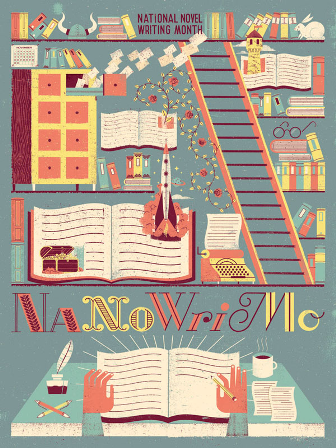The Middle of Everything
November 15 is the middle. It is the midpoint of National Novel Writing Month (NaNoWriMo). The middle of November is when sports teams begin assessing their players. Mid November is when teachers prepare tests and look at grades. November 15 promises that Oreo cookie fans may customize packages online (you can Google that). So much happens at the middle. Just ask the “middle” child.
The middle always annoys us.
- “Can I call you back? I’m in the middle of something…”
- “I don’t know what happens! I’m only in the middle of the book.”
- “The middle of the race is brutal. Get ready to hit ‘the wall.’ “
We speak of being in the middle of a mess, the middle child, the middle class, the middle mind, middle age, middle school, middle income, and we always meet up in the middle.

That’s why it’s interesting when writers speak about the – with homage to Jim Butcher – the Great Swampy Middle of their novels. The GSM (for short) is where plots get lost, characters wander off course, the bones of dead and confused are left behind and writers almost always give up. And that is the challenge, to make your way through the Great Swampy Middle and do so without losing the point.
Whether it is your life, or your novel, the GSM can be scary. It’s expansive and full of darkness. Lots of potholes and cliffs. Mountains to climb and sharp things to be avoided. And there are a few simple things that get you through it, safely.
- Focus. Do not deviate from your path. Whether you are in middle age, middle of the book, middle of the race, you must keep your focus. Otherwise you will veer off course and lose your way, like so many before you.
- Understand. The middle is necessary. Nothing is achieved by starting and finishing without something happening in the middle. Simply accept that this is how things go and don’t fear it. Necessary means ordinary. Make it less scary that way.
- Believe. In yourself. Don’t make excuses. Don’t look for a way out. The best way is always through, said Robert Frost (shortest too). Know that you will succeed and you will. It is a self-fulfilling prophecy. When you believe you can, obstacles are smaller. And so is that Great Swampy Middle that looked so immense when you initially began your project, your life, your race, your novel.
I’m participating in NaNoWriMo and I’m deep in the GSM. It feels a bit daunting to be here in a new story but I’m making the trek with purpose and having fun along the way. I have moments of self-doubt and then I ask myself, why? I didn’t doubt when I hit middle age. I’ve never flinched in the middle of anything. So why would I in the middle of writing a novel?
One answer explains it all – fear of failure. Racing, writing, reading, working, living. We fear failing.
Want the truth? The only true failure is the quitter. And that’s not you. And it’s not me. So, Keep Pushing on (Thanks REO Speedwagon) and the GSM will become a memory.
To all the middle children out there, I empathize. I’m first born. Failure is not an option. I’m an Aries, I barrel through. I’m a person, I perservere. I’m a writer.
Do I blanche? No! I am fearless.
Be fearless. Welcome to the Middle. Follow me….
Yours Between the Lines,
Sherry
*************
****The following items will always appear to keep you posted on activities.*****
WIP (Works in Progress):
– first novel in the Evening Bower series, about vampires and other supernatural creatures
– fictional memoir
– four-part fairy story
On the Desk: (next reading): Second Olympus by K.A. Stewart
Off the Desk (book just finished): Rogue by Karen Lynch
Coming Soon: Book Recs, Thanksgiving Musings, and a new Guest Editorial

















